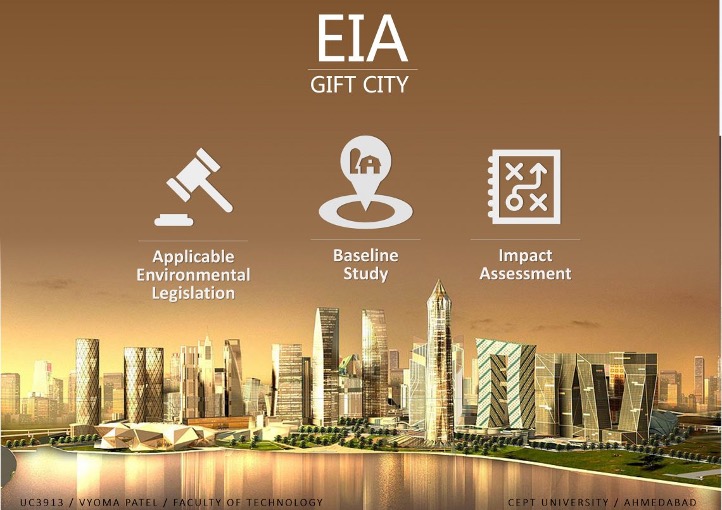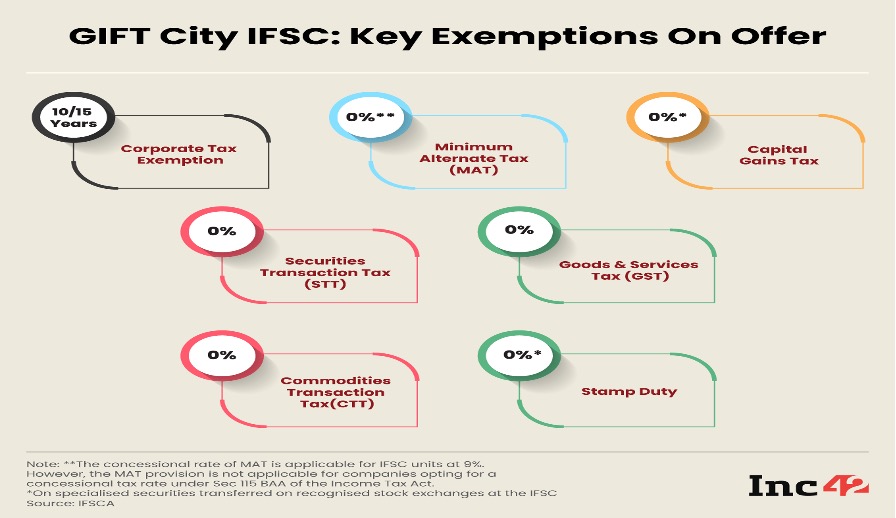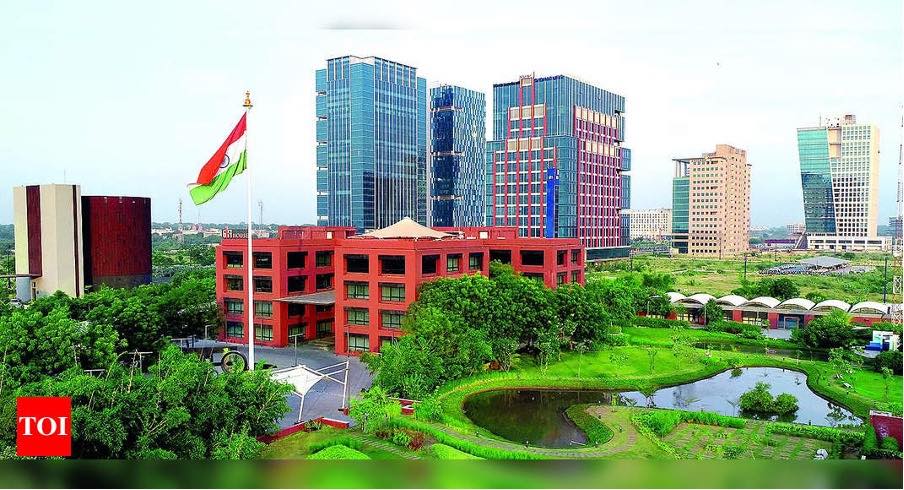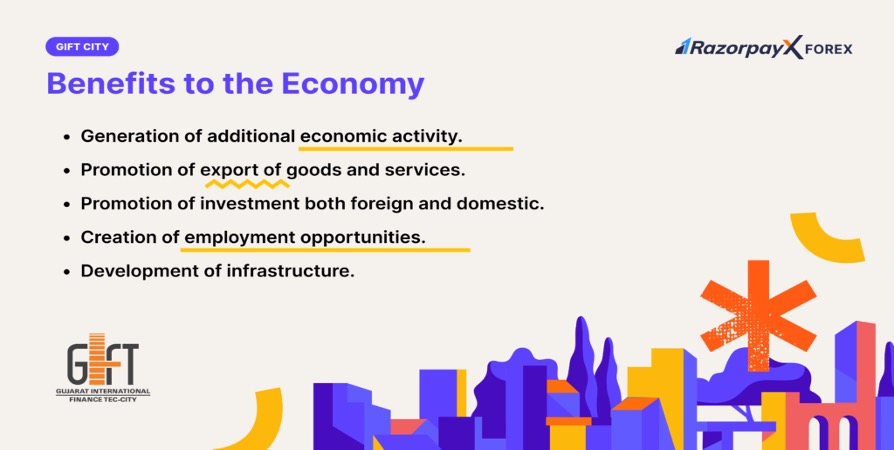In the fast-paced world of finance and commerce, India has been making strides to establish its presence as a global economic powerhouse. To this end, the Gujarat International Finance Tec-City, or GIFT City, was conceived and developed. This ambitious project is poised to redefine India’s financial landscape and create a thriving ecosystem for business and commerce. In this article, we will delve into the history, need for formation, advantages, arguments, cost, environmental impact, world opinion, and interesting facts surrounding GIFT City.

Genesis of a Vision
In the early 2000s, as India’s financial markets were gaining momentum, a visionary idea emerged. What if India could create a financial hub that could rival the likes of Singapore, Dubai, and London? The Government of Gujarat pondered this question, laying the cornerstone of a dream that would soon be known as Gujarat International Finance Tec-City, or simply GIFT City.
The Imperative Need
The need for GIFT City was abundantly clear. India was rapidly becoming a global economic powerhouse, and its financial markets were expanding at an unprecedented rate. Yet, there was a missing piece in this puzzle: a dedicated space for international financial transactions, with state-of-the-art infrastructure, robust regulation, and an ecosystem designed to attract both domestic and foreign investment.
GIFT City was born out of a need to provide India with a competitive edge in the global financial services sector. India’s financial markets were growing rapidly, and there was a demand for a dedicated space that could facilitate international financial transactions, provide state-of-the-art infrastructure, and attract both domestic and foreign investment.
Infrastructure and Amenities
One of GIFT City’s defining features is its world-class infrastructure. Spread across 886 acres in the Gandhinagar district of Gujarat, this city boasts modern skyscrapers, efficient transportation systems, and cutting-edge technology. It is divided into multiple zones, including a Special Economic Zone (SEZ), an International Financial Services Centre (IFSC), and a Domestic Area.
The IFSC in GIFT City is its core, designed to provide a global platform for financial services. It includes a stock exchange, commodity exchange, international banks, and insurance companies. To facilitate this, GIFT City has created a regulatory framework that aligns with international standards.

Crafting Advantages
GIFT City was not conceived in isolation but as a carefully crafted response to the evolving needs of India’s financial landscape. The advantages it offers are its pillars of strength.
International Financial Services Centre (IFSC): GIFT City stands as India’s first International Financial Services Centre. It offers a tax-efficient and well-regulated environment, making it an irresistible destination for financial institutions, banks, and insurance companies.
Infrastructural Marvel: At its core, GIFT City boasts world-class infrastructure, with modern office spaces, connectivity, and amenities that rival those of any global financial hub.
Connectivity Galore: Strategically located near Ahmedabad, GIFT City ensures excellent connectivity to major Indian cities. An international airport nearby adds to its accessibility.
SEZ Status: The city operates as a Special Economic Zone, offering various fiscal incentives to businesses operating within its confines.
Robust Regulatory Framework: GIFT City is backed by a regulatory framework designed to foster ease of doing business while ensuring transparency and accountability.
Debating the Pros and Cons
As with any ambitious endeavor, GIFT City has encountered its fair share of criticism and scepticism. Critics raise valid concerns.
The Cost Conundrum: The project comes with a substantial price tag – an estimated INR 70,000 crore (approximately USD 9.5 billion). The question lingers: will the investment yield the anticipated returns?
The Battle of Giants: GIFT City is not alone in this race. Established global financial hubs like Singapore, London, and New York offer stiff competition. Attracting global financial giants to GIFT City is a monumental task.
Infrastructure Challenges: Building and maintaining the required infrastructure is a Herculean task. The city must keep pace with the rapidly evolving technological and financial industry requirements.

Environmental Impact
The development of GIFT City has not been without its environmental challenges. Constructing a modern city on a greenfield site has necessitated significant land use changes, leading to concerns about habitat disruption and potential ecological impacts. However, the project’s developers have emphasized their commitment to sustainability, including green building practices and eco-friendly design.
A GIFT Welcomed by the World
GIFT City has not only attracted the attention of the Indian financial community but has also garnered international interest. Many global financial institutions and businesses have set up operations within its walls, signalling confidence in India’s potential as a financial services hub. The world watches as GIFT City’s success and global recognition continue to evolve.
GIFT City's Impact on India
The development of GIFT City aligns with India’s aspirations to become a $5 trillion economy. By attracting foreign investments and providing a conducive environment for financial services, it contributes significantly to the nation’s economic growth.
Job Creation:
GIFT City is expected to generate millions of jobs, both directly and indirectly, in the financial, technology, and services sectors. This employment boost will help address India’s demographic challenges.Global Competitiveness:
India’s global competitiveness will receive a boost as GIFT City becomes a hub for international financial transactions. It enhances the nation’s standing in the global economy.
Financial Inclusion:
By providing a platform for financial services, GIFT City can contribute to financial inclusion by reaching underserved populations with innovative products and services.

Future Perspectives
Looking ahead, GIFT City’s future appears promising:
Expansion:
GIFT City plans to expand its infrastructure and services, attracting more companies and financial institutions.
Fintech Innovation:
The city is poised to become a fintech innovation hub, fostering the development of cutting-edge technologies in finance.
International Collaboration:
Collaboration with global financial giants will further integrate GIFT City into the international financial ecosystem.
Economic Growth:
As GIFT City matures, it will play a pivotal role in India’s economic growth story, contributing significantly to GDP.
Conclusion
GIFT City is more than bricks and mortar; it’s a symbol of India’s unwavering determination to create its destiny in the world of finance. As the story unfolds, one thing is clear: GIFT City is a gift that India hopes to treasure for generations to come.
GIFT City represents a beacon of hope and a testament to India’s aspirations in the world of finance. With its strategic location, state-of-the-art infrastructure, and supportive regulatory environment, it has the potential to transform India into a global financial powerhouse. As it continues to evolve and grow, GIFT City holds the promise of a brighter economic future for the nation and its people.
As the city continues to evolve and mature, it will be fascinating to witness its impact on India’s financial future and its place in the global financial arena.
Written by – Lucksh Mota
Edited by – Zainab Kazi
